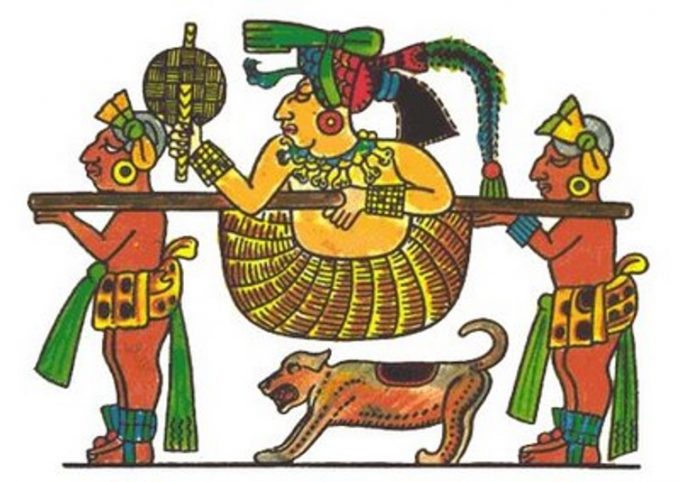Maya surnames
Part VII
After the Spanish conquest, the proper names in the Mayan language fell into disuse and ceased to be used, but not the surname, which began to be used in the same way the Spanish surname is used, preceded by the Castilian baptismal names. That is to say, names like Juan, Pedro, or Jorge, plus the Mayan surname.
Over time, many of the Maya patronymics have mutated. Still, others had not changed and remain identical or very similar to how they were known in ancient times, derived from flora, fauna, animals, and other elements, just as the Spaniards found them when they arrived in Yucatan.
Fray Diego de Landa, in his “Relación de las Cosas de Yucatán” in 1566 (The Relation of Things of Yucatan), points out that the surname was the most important name. It gave a feeling of kinship between people with the same surname because they belonged to the same lineage.
According to the publication of Ralph Roys, “Personal Names in Yucatán” of 1940, in its version translated into Spanish by Roldán Peniche Barrera, the geographic distribution of the surnames offers aspects of interest. While there are surnames in common throughout most of the Yucatan Peninsula, some were once considered Maya royalty. Among these are:
– The Canul family in the province of Ah Canul.
– The Pech family in Ceh Pech
– The Xiu, the family that ruled Maní, was never very numerous, and outside their province, there were only a few scattered by that name.
– The Cocom family who ruled Sotuta.
– The Uluac family in Chancenote.
– The Chel family ruled the province of Ah Kin Chel.
– The Ihuit family, who ruled Hocabá and Homún.
– The Cupul family , who ruled a wide area of eastern Yucatan, called “the Cupul Province” and, of course, the Itza family of Chichen Itza.
– In what today is Champotón was the Couoh family and the Can family in what today is Chetumal, Quintana Roo.
Among the Mayan surnames and their probable meanings are those derived from animals such as:
Balam (jaguar), Chab (anteater), Ceh (deer), Coh (puma), Bah (tuza), May (deer) and Och (opossum) to name a few.
Some correspond to birds such as Cutz (wild turkey) or Cobá (chachalaca – a type of domestic hen), those that correspond to reptiles such as Ac (turtle), Can (snake), and Huh (iguana), among others. Those corresponding to insects such as Pech (tick), Maas (cricket), Couoh (tarantula) or Cab (bee), and Cach, which is believed to come from akach, meaning horsefly, with the variant Caach.
In the same way, some names refer to various things in nature—related to the cosmos; we find Ek (star), Uh (moon), Xaman, which is north, wind, or north star. Again, related to nature, we have Uitz, which means hill, Be, road or path, Kak (k’ak’), which means fire, bonfire, Tun which means stone with its derivative Kantún which means precious stone.
Other surnames, as I mentioned, refer to the flora in general, such as Nic (flower), Ché (tree), Xiu (herb), Aké (liana or ivy).
Others, such as Pool, mean “merchant,” although many say its meaning is “head.” The latter is incorrect since, in its pronunciation, the glottalized p’ is heard. Thus, we also find Caamal (ka’amal), which means “twice” and comes from ka’a, two and -máal, numeral classifier to count times or units. Kaal, which means neck, but also narrow opening. Canché (ka’anche’) is a plank for cultivating vegetables and Canul whose meaning is the protector of the mountains, animals, or men, depending on the context in which it is used.
It should be clarified that, over time, many surnames suffered mutations as they were “castellanized” by being transcribed into the traditional spelling by employees of the civil registry. In other cases, at the request of the interested party, their last name was translated into Spanish as happened with Ek’ for Estrella (Star); Che’ for Madera (Wood), Dzul for Caballero (Knight), to name a few, according to Alfredo Barrera Vázquez in the Cordemex Maya Dictionary as well as Ralph Roys.
One thing is sure: We are proud to be part of a millenary and living culture. In the middle of 2021 (almost 2022), those surnames of our Maya ancestors are preserved and found in virtually all strata of Yucatecan and peninsular society.
See you next week
José E. Urioste Palomeque
For Times Media Mexico / The Yucatan Times
December 16, 2021
Merida Yucatan, Mexico.
Facebook: @JoseUriosteMx
Twitter: @JoseUrioste_



